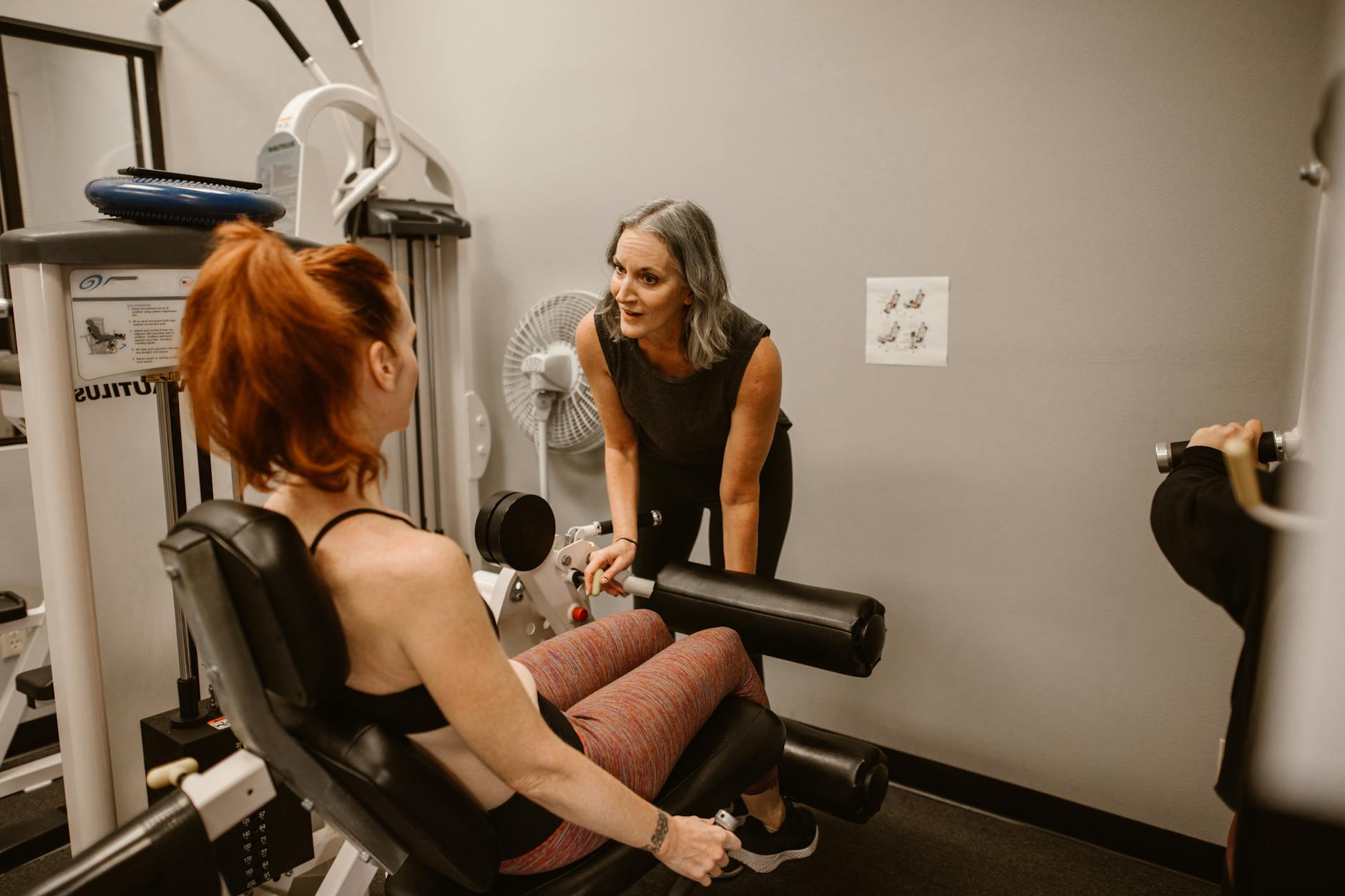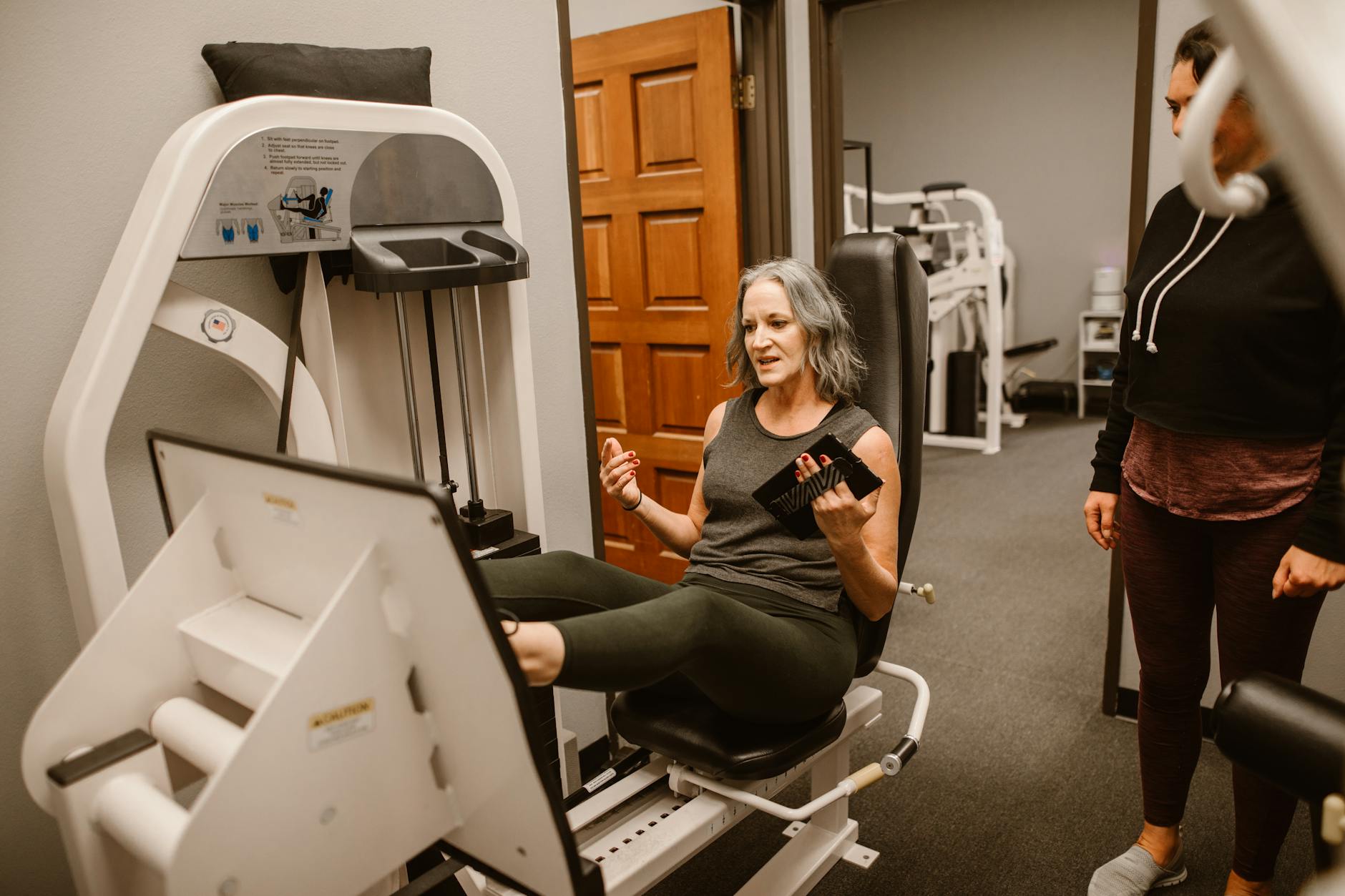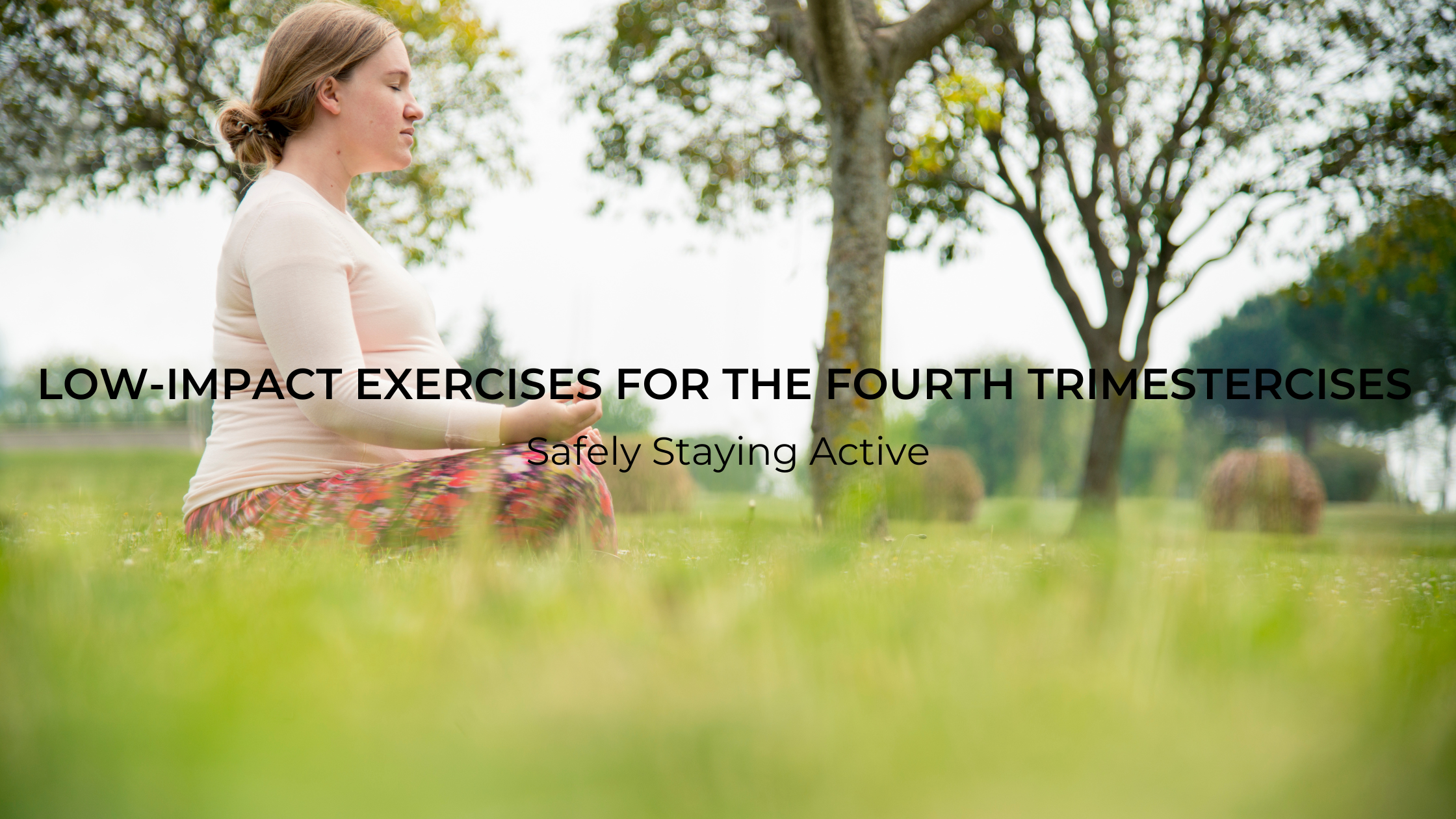Low-Impact Exercises for the Fourth Trimester: Safely Staying Active
Staying active after giving birth is essential for your physical and emotional well-being during the fourth trimester. Your body has undergone significant changes, and it’s crucial to approach exercise with caution and care. While high-impact exercises like running should be postponed for at least twelve weeks, there are safe low-impact exercises you can start soon after delivery. These exercises focus on enhancing circulation, promoting healing, and gently strengthening your core and pelvic floor muscles. By following these guidelines, you can gradually regain your strength and fitness while prioritizing your recovery.
Understanding the Fourth Trimester
The fourth trimester, referring to the 12 weeks following childbirth, is a crucial period for a mother’s physical and emotional well-being. Despite its significance, this phase often receives minimal attention from healthcare providers, a concern emphasized by the American College of Obstetricians and Gynecologists (ACOG).
Importance of Postpartum Care
It is recommended by ACOG that mothers have prompt and continuous postpartum care, beginning with an initial check-up within three weeks after delivery and culminating in a comprehensive visit no later than 12 weeks post-birth. This postpartum care plan should ideally be established during pregnancy to ensure thorough support for the mother and her family.
The Role of Healthcare Providers
Healthcare professionals play a critical role in addressing the diverse needs of mothers during the postpartum period. This involves monitoring physical recovery, mental well-being, family planning and contraception discussions, as well as management of chronic health conditions. Additionally, tailored services that align with each mother’s individual requirements are advocated to provide comprehensive support.
Ongoing Support and Individualized Care
ACOG emphasizes that postpartum care should not follow a one-size-fits-all approach. High-risk individuals may necessitate earlier and more frequent check-ins, with a focus on the physical and emotional well-being of both the mother and the infant. Ultimately, the postpartum visit serves as an opportunity for healthcare providers and patients to collaboratively develop a roadmap for future health, addressing any concerns and outlining a tailored plan for ongoing care.

The Importance of Low-Impact Exercise Postpartum
After giving birth, it’s important for new moms to prioritize low-impact exercises to aid in their postpartum recovery. These exercises not only promote physical health, but also contribute to emotional well-being during this transformative stage.
Benefits for Physical Health
Low-impact exercises, such as walking, gentle yoga, and swimming, can help new moms regain their strength and stamina without putting excessive stress on their bodies. These activities can aid in rebuilding abdominal muscle strength, improving cardiovascular endurance, and promoting overall physical well-being. Additionally, these exercises can assist in managing postpartum discomfort and reducing the risk of injury.

Emotional Wellness
Engaging in low-impact exercises can have a positive impact on a new mother’s emotional state. Physical activity triggers the release of endorphins, which are known to elevate mood and reduce stress and anxiety. Additionally, participating in these exercises provides an opportunity for new mothers to practice self-care and carve out time for themselves, contributing to an overall sense of well-being.
Exercise as a Confidence Booster
Postpartum low-impact exercises can also serve as a confidence booster for new moms as they navigate the changes in their bodies. Engaging in regular physical activity fosters a sense of accomplishment and empowerment, aiding in the transition to motherhood and promoting a positive self-image.
Safety Tips for Postpartum Exercise
After giving birth, it’s crucial to prioritize safety when reintroducing physical activity. Here are essential safety tips to keep in mind.
Listening to Your Body
During the postpartum period, paying close attention to your body’s signals is paramount. If you experience pain, dizziness, or unusual discomfort during exercise, it’s essential to stop and reassess. Listen to your body’s cues, and if something doesn’t feel right, take a break.

How to Gauge Intensity
When starting postpartum exercise, it’s crucial to begin with low-impact activities and gradually increase the intensity. Aim for workouts that elevate your heart rate without causing strain. Walking, swimming, or gentle yoga are excellent starting points. Keep the intensity at a comfortable level and avoid pushing yourself too hard, especially in the early stages of postpartum exercise.
When to Consult a Healthcare Provider
Before embarking on any postpartum exercise regimen, it’s advisable to consult with your healthcare provider. This is especially important if you’ve had a cesarean birth or experienced any complications during delivery. Your healthcare provider can offer personalized guidance on when it’s safe to commence exercise and recommend suitable activities based on your unique postpartum recovery.
Recommended Low-Impact Exercises for New Mothers
After childbirth, it’s essential to ease back into exercise to support your recovery and overall well-being. The following low-impact exercises are particularly beneficial for new mothers:
Walking
Walking is an excellent low-impact exercise that can be easily incorporated into your daily routine. It helps improve cardiovascular fitness, strengthens the lower body, and promotes mental well-being. Aim for short walks initially, gradually increasing the duration as your stamina improves.

Postnatal Yoga
Postnatal yoga focuses on gentle stretching, breathing techniques, and relaxation, which can aid in rebuilding core strength and improving flexibility. It’s a restorative practice that also promotes stress relief and emotional well-being during the postpartum period.
Pilates for Postpartum
Pilates offers a gentle yet effective way to strengthen the core muscles, including the pelvic floor, which are crucial for postpartum recovery. It also helps improve posture and overall muscle tone, providing a solid foundation for more intense workouts in the future.
Swimming
Swimming is a low-impact, full-body workout that alleviates pressure on joints while engaging various muscle groups. It’s an excellent option for new mothers looking to enhance cardiovascular endurance and muscle strength without overstressing the body.
Cycling
Stationary cycling or outdoor cycling can be a great way to gradually reintroduce cardiovascular exercise postpartum. It promotes lower body strength and endurance while allowing you to control the intensity based on your comfort level and fitness progression.
Incorporating these low-impact exercises into your routine can contribute to your physical and emotional recovery after childbirth, providing numerous health benefits while minimizing the risk of strain or injury.
Structuring a Postpartum Exercise Routine
After childbirth, it’s essential to create a postpartum exercise routine tailored to the unique needs of the fourth trimester. Here’s how to structure your routine effectively to support your physical and mental well-being during this delicate phase.
Setting Realistic Goals
Establishing realistic exercise goals is crucial in the postpartum period. Focus on gentle movements and gradual progress to avoid overexertion. Initially, aim for short, low-impact sessions and gradually increase intensity as your body strengthens. Setting achievable milestones helps in tracking progress and staying motivated.
Balancing Exercise with New Responsibilities
Harmonizing exercise with the demands of caring for a newborn is essential. Prioritize self-care while being adaptable to your baby’s schedule. Incorporating brief workouts while the baby naps or engaging in activities that involve your baby, such as stroller walks, can make exercising more manageable as a new parent.
Creating a Supportive Exercise Environment
Crafting a supportive exercise environment can enhance consistency. Ensure you have comfortable workout attire, a dedicated space for exercise, and necessary childcare arrangements if needed. Additionally, seeking support from your partner, family, or friends for occasional childcare can provide valuable opportunities for uninterrupted workouts.

Incorporating these aspects into your postpartum exercise routine can foster a balanced and sustainable approach to fitness while prioritizing your well-being as a new parent.
Postpartum Exercise Myths Debunked
During the postpartum period, new mothers often encounter numerous misconceptions about resuming physical activity after giving birth. Dispelling these myths is crucial for ensuring a safe and effective postpartum exercise routine.
Myth: You can resume working out at 6 weeks postpartum.
The idea that women can universally return to their regular workout routines at the six-week mark is a prevalent misconception. However, postpartum recoveries vary significantly among individuals. Even if a woman maintained good physical fitness during pregnancy, her body still undergoes significant changes that require a tailored rehabilitation program. For example, individuals who underwent a C-section necessitate a different approach to recovery and rehabilitation. It’s essential to progress gradually and seek professional guidance, such as consulting with a pelvic floor physical therapist, especially if experiencing diastasis recti or pelvic floor issues.
Myth: It’s normal to pee yourself during a workout or a sneeze.
While postpartum urinary incontinence is common, it is not a normal or acceptable occurrence. Persistent pelvic floor muscle tension can lead to involuntary leakage and requires specific exercises to address. Learning to relax and contract the pelvic floor muscles in coordination with diaphragmatic breathing is essential. Seeking the guidance of a pelvic floor physical therapist can be instrumental in effectively addressing this issue.
Myth: You don’t have to worry about pelvic floor trauma or seek a PF Physical Therapist if you didn’t push.
Even if a woman underwent a C-section without pushing, she may still experience pelvic floor trauma due to the surgical process. Scar tissue resulting from a C-section can cause restrictions and impact pelvic floor function. In such cases, scar tissue mobilization, carried out post-six-week healing, can significantly aid in rehabilitation. Seeking assistance from a pelvic floor physical therapist or reliable online resources is crucial for understanding and addressing the implications of pelvic floor trauma following a C-section.
Nourishing Your Body for Exercise
Physical exercise plays a vital role in the postpartum period, helping to promote physical and mental well-being. To effectively support your body during this period, it is essential to focus on proper hydration and nutrition tailored to the needs of postpartum women.
Hydration and Its Role in Exercise
Staying adequately hydrated is crucial for postpartum women engaging in low-impact exercises. Hydration supports the body’s ability to regulate temperature, lubricate joints, and deliver nutrients to cells. Dehydration can lead to fatigue and decreased exercise performance.
As a new mother, it’s important to prioritize regular intake of fluids throughout the day, especially during and after exercise. Water is the best choice for maintaining hydration, but low-sugar electrolyte drinks can also be beneficial, particularly during longer exercise sessions or in warm environments.
Nutritional Needs for Postpartum Women
Postpartum women have unique nutritional needs, particularly if breastfeeding. Consuming a well-balanced diet rich in essential nutrients is paramount for replenishing energy stores, supporting milk production, and promoting recovery.
Key nutrients to focus on include protein, iron, calcium, and omega-3 fatty acids. Protein is essential for tissue repair and muscle recovery, while iron is crucial for preventing fatigue and supporting energy levels. Calcium is important for bone health, and omega-3 fatty acids aid in reducing inflammation and supporting brain function.
Incorporating nutrient-dense foods such as lean proteins, leafy greens, dairy or plant-based milk alternatives, and fatty fish into your diet can help meet these nutritional needs. Additionally, consulting with a healthcare provider or a registered dietitian can provide personalized guidance for optimizing postpartum nutrition.
To support your exercise routine during the fourth trimester, maintaining proper hydration and meeting nutritional needs are foundational steps in promoting overall well-being and recovery.
For further information on postpartum nutrition, visit www.nutrition.gov for expert guidance and resources.
Special Considerations for the Fourth Trimester
The fourth trimester, or postpartum period, requires special considerations when it comes to exercise and physical activity. New mothers should be mindful of various factors such as diastasis recti, pelvic floor health, and breastfeeding.
Diastasis Recti and Exercise
Diastasis recti, the separation of the abdominal muscles, is common after pregnancy. It’s essential to focus on exercises that support the healing of this condition. Avoiding activities that strain the midsection, such as traditional crunches, and incorporating gentle core-strengthening exercises can aid in the recovery process. Pilates and specific yoga poses can also help in addressing diastasis recti while promoting overall strength and flexibility.
Pelvic Floor Health
Pelvic floor health is crucial for postpartum women. Engaging in exercises that strengthen the pelvic floor muscles, such as Kegel exercises, can contribute to recovery. Low-impact activities like walking, swimming, and cycling can also support pelvic floor stability without causing strain.

Breastfeeding and Exercise
For mothers who are breastfeeding, staying hydrated and wearing a supportive sports bra are essential during exercise. Incorporating gentle movements like postpartum yoga or low-impact aerobics can support overall well-being without impacting milk production. It’s vital to listen to your body and adjust the intensity of workouts based on individual comfort levels.
These considerations play a significant role in creating a safe and effective postpartum exercise routine. Prioritizing these aspects can contribute to a smooth recovery and overall well-being for new mothers.
Conclusion
In the fourth trimester, it’s essential to focus on low-impact exercises that promote healing and support your body’s recovery after giving birth. By enhancing circulation through gentle movements and breathing exercises, you can aid in the healing process while bonding with your newborn. As you progress through the weeks, incorporating pelvic floor strengthening, basic core exercises, and gradually increasing walking can further contribute to your postpartum well-being. Prioritizing rest, hydration, and a nutritious diet will also play a crucial role in your overall recovery during this phase. Remember, it’s important to listen to your body and consult with a healthcare professional, such as a pelvic floor therapist, to ensure that your exercise regimen aligns with your individual needs.
Read More: The Ultimate Guide to Low-Impact Workouts for Balancing Cortisol Levels in Women





